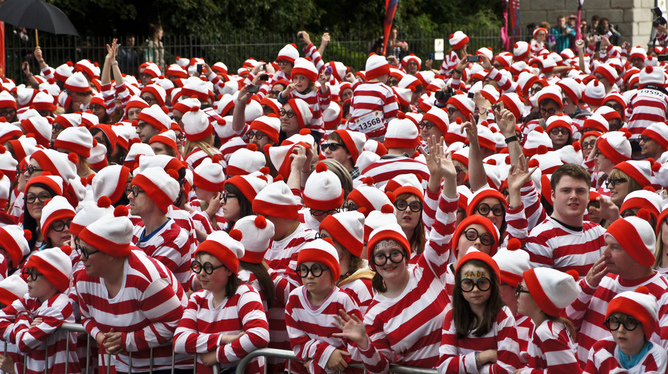
Study of Motion Sheds New Light on Autism and The Brain

This article was originally published at The Conversation. The publication contributed the article to Live Science's Expert Voices: Op-Ed & Insights.
Our eyes detect light by converting it into electrochemical impulses. These are detected by brain and used to see but also to detect movement. How the brain processes visual information such as motion can lead to insights into autism.
People with autism have shown superior abilities with visual search – a perceptual task that involves picking out an object or feature among many others. Often they can locate hidden objects far more quickly than other people. This superior ability could be likened to someone who is able to see the trees but has no perception of the woods.
However, this advantage is not apparent with moving objects. Individuals on the autism spectrum have greater difficulty in determining when, for instance, a series of dots are moving together in one direction or randomly. These differences in the perception of motion and detailed patterns were explored at the Autism Research Group at City University London.
Electroencephalograms measure the small electrical impulses in the brain when nerve cells are active. We can use these signals to see which part of the brain is being used when the participant looks at a specific image. In our study, published in Documenta Ophthalmologica, we found the same parts of the brain were active, but in participants with Autism Spectrum Disorder the electrical activity was greater than typical individuals, which indicated a difference in the way their brains were processing moving images.
The finding that there are significant differences in brain activity in response to motion but not patterns suggests that the autistic brain processes more complex information, such as motion, differently. In contrast we found that the responses to simple patterns were similar in people with autism and without.
This could mean that the advantages seen in individuals on the autism spectrum in static visual search may be the result of higher processes in a different part of the brain.
Sign up for the Live Science daily newsletter now
Get the world’s most fascinating discoveries delivered straight to your inbox.
To explore this, we are now studying the electrical responses to flashes of light by the retina. The retina contains many similar neurotransmitters that are used in the brain. And several genes associated with these neurotransmitters have been linked to autism. By studying the retina’s responses to light we may reveal some differences in the retinal responses in autism compared to typical individuals. This may help us to understand more about how the neurotransmitters may be working in the brain of autistic individuals.
It is also now possible to do scans of the retina that are similar to an MRI scan, so we are able to look more closely at the structural architecture of the retina in individuals with autism spectrum disorder, which we can then compare to typical retinas. This may reveal differences in the central nervous system’s organisation in individuals with autism using a novel non-invasive approach.
Paul Constable's work was funded by the College of Optometrists.
This article was originally published on The Conversation. Read the original article. Follow all of the Expert Voices issues and debates — and become part of the discussion — on Facebook, Twitter and Google +. The views expressed are those of the author and do not necessarily reflect the views of the publisher. This version of the article was originally published on Live Science.










